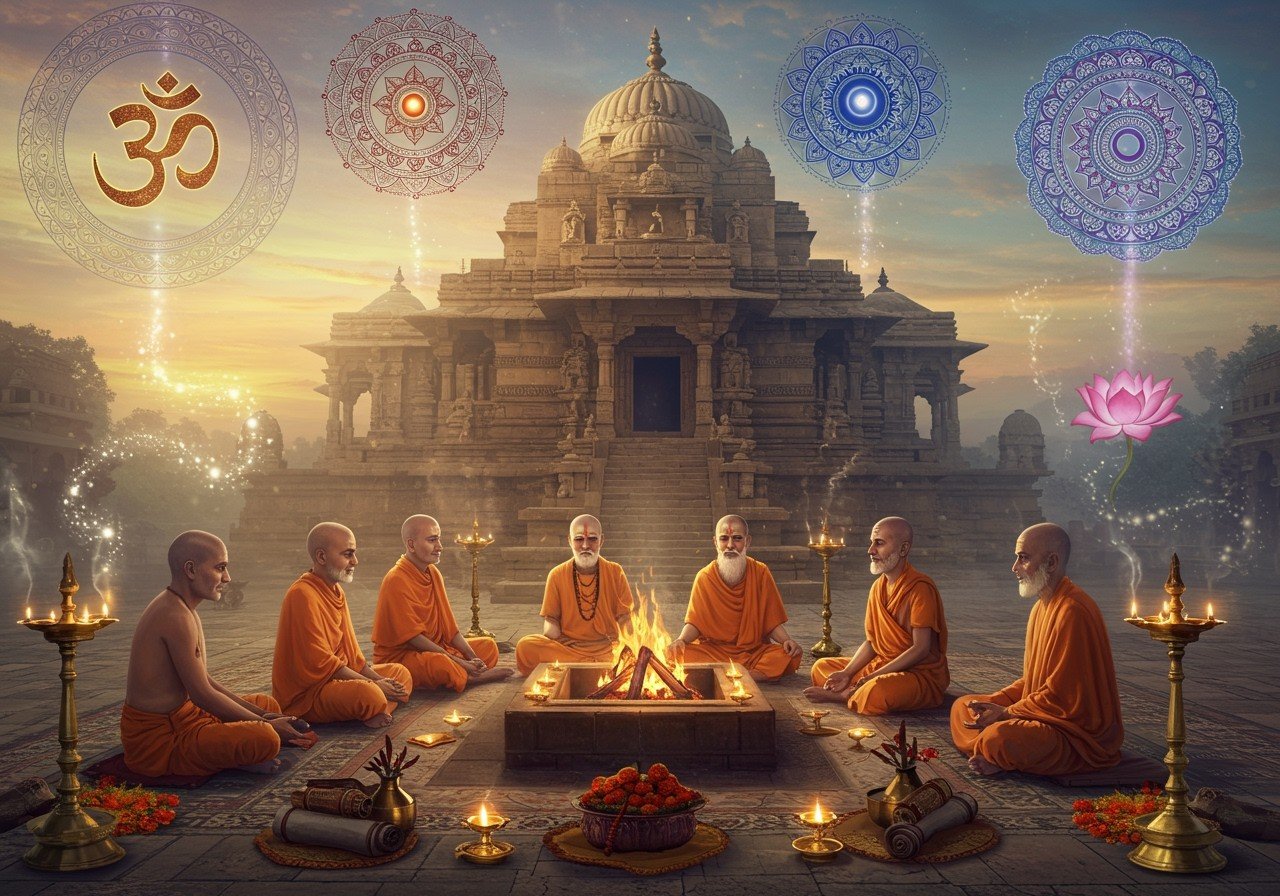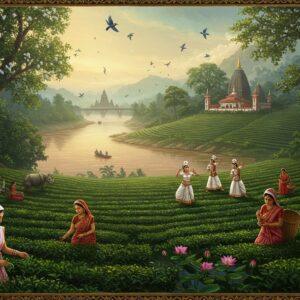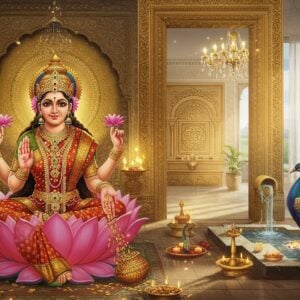
India’s spiritual heritage is a vibrant tapestry woven over millennia. Its ancient traditions and beliefs have evolved, shaping modern Indian society. Spirituality in India transcends mere religious practices; it’s ingrained in daily life, art, and culture. Understanding these traditions is key to appreciating their historical importance and continued relevance in our changing world.
Delving into India’s Spiritual Journey
India’s spiritual journey is a captivating narrative of beliefs and practices that have developed over centuries. Each era has enriched the spiritual landscape of the Indian subcontinent, establishing it as a source of wisdom and tranquility.
Prehistoric Era (Before 3300 BCE)
In the mists of prehistory, early inhabitants of India embraced animism, perceiving a spiritual essence within all living entities. Rituals from the Mesolithic period (around 8000-4000 BCE) suggest a nascent connection to the divine. The Indus Valley Civilization (3300-1300 BCE) left behind vestiges of spiritual beliefs, potentially regarding the afterlife, imprinted on their artifacts.
Vedic Period (1750-500 BCE)
The Vedic era established the bedrock of Hinduism with the creation of the Vedas. These sacred texts comprise hymns, rituals, and profound philosophical explorations. Concepts like Brahman (ultimate reality) and Atman (individual soul) emerged, offering insights into the nature of existence and consciousness. This period witnessed the development of complex rituals and sacrifices, performed by Brahmin priests.
Rise of Shramanic Traditions (6th Century BCE)
Jainism and Buddhism emerged during this period, challenging certain Vedic practices and presenting alternative paths to enlightenment. These traditions emphasized non-violence (ahimsa), meditation, and liberation from worldly attachments. Buddhism, particularly under Emperor Ashoka’s reign (3rd century BCE), spread extensively, influencing cultures far beyond India’s borders. Jainism focused on the purification of the soul through ascetic practices.
Classical Period (500 BCE – 500 CE)
This era saw the flourishing of diverse Hindu philosophical schools, including Nyaya, Samkhya, and Vedanta. The epic narratives of the Mahabharata and Ramayana profoundly shaped spiritual thought, interweaving moral principles with divine tales. A synthesis of Brahmanical traditions with other Indian cultures enriched the spiritual landscape. This period also witnessed the development of the Bhagavad Gita, a key text in Hindu philosophy.
Medieval Period (500 CE – 1500 CE)
The Bhakti movement ignited a wave of personal devotion, with poet-saints expressing their love for deities through heartfelt verses. Temples evolved into centers of worship and community life, anchoring spirituality in everyday existence. This period witnessed the rise of prominent Bhakti figures like Kabir, Mirabai, and Surdas, who promoted devotion to God irrespective of caste or creed.
Modern Period (1500 CE-Present)
In the 19th century, Indian spirituality captivated the West. Luminaries like Swami Vivekananda introduced yoga and meditation as pathways to inner peace. Today, these practices enjoy global acceptance, bridging cultures through shared spiritual pursuits. This period also saw the rise of new religious movements and reformist thinkers within Hinduism.
Core Facets of Indian Spirituality
- Diversity: Indian spirituality embraces a vast spectrum of beliefs and practices, accommodating various paths and perspectives. It recognizes the validity of multiple spiritual expressions, fostering a culture of tolerance and understanding.
- Spiritual Inquiry: The pursuit of wisdom and self-realization is central to Indian spirituality. It encourages individuals to question the nature of reality, explore their inner selves, and strive for a deeper understanding of life’s purpose. It emphasizes the importance of introspection and self-awareness in the journey towards enlightenment.
- Dharma: Living virtuously, aligning with cosmic order and fulfilling one’s duties, is paramount in many Indian spiritual traditions. It guides individuals to act ethically and contribute positively to society, fostering harmony and balance in the world. Dharma emphasizes the interconnectedness of all beings and the importance of living in accordance with universal laws.
- Karma and Rebirth: The concept of karma, where actions have consequences that influence future lives, and samsara, the cycle of birth and death, are prominent themes. This understanding encourages mindful actions and personal responsibility, shaping the course of one’s spiritual evolution. The belief in karma and rebirth underscores the importance of living a righteous life to attain liberation.
- Moksha: Liberation from the cycle of rebirth is often regarded as the ultimate spiritual objective. It represents the culmination of spiritual growth, where the individual transcends limitations and attains a state of eternal bliss and freedom. Moksha is seen as the ultimate goal of spiritual practice, signifying liberation from suffering and the cycle of samsara.
Indian spirituality continues to inspire and guide individuals worldwide. Its timeless teachings offer solace and direction in an ever-changing world. Connect with your inner self with our guide to Hindu philosophy.
Poojn.in: Your Companion on the Spiritual Path
Poojn.in, India’s largest cultural goods and services store, supports your spiritual journey by providing authentic puja items and ritual materials. Discover a wide selection of products that connect you with India’s rich traditions. Explore our collection of Bel malas, Tulsi malas, Shiva Lingams, and Adiyogi statues to enhance your spiritual practice.
Embrace India’s spiritual legacy and let its teachings illuminate your path to inner peace and self-discovery. Discover India’s spiritual heart at poojn.in.


